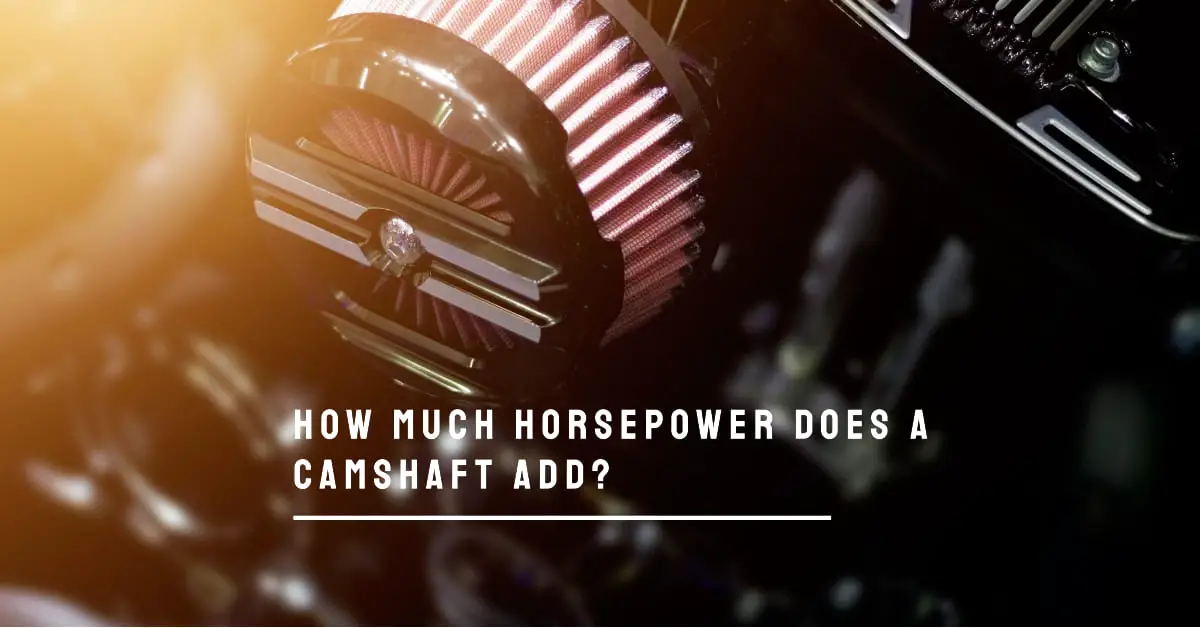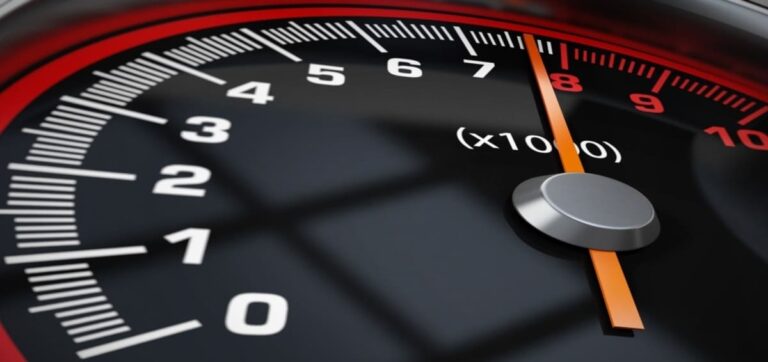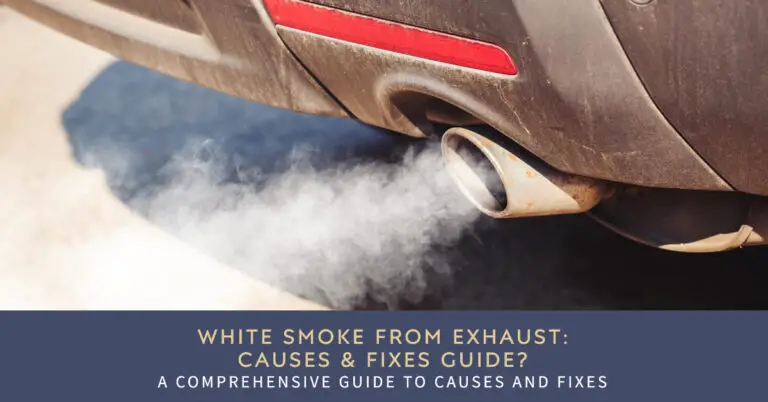How Much Horsepower Does A Camshaft Add? A Simple Explanation

Can simply installing a new camshaft really give your engine a huge 50-100 horsepower boost? The short answer is: not by itself. While an upgraded camshaft can add a nice chunk of power to your vehicle, this often-quoted 50-100 horsepower gain is only possible on force-fed motors or with extensive supporting modifications. Keep reading to learn what’s realistic from a camshaft upgrade, and how to properly spec a cam and combine it with other bolt-ons to substantially boost your horsepower output.
This article will cover:
- What a camshaft does and how it affects horsepower
- Realistic horsepower gains from a camshaft
- The right way to upgrade your cam for max power
- Supporting modifications to combine with a cam swap
- Camshaft recommendations by vehicle and motor
Table of Contents
What Does a Camshaft Do?
Before discussing cam-driven power gains, it helps to understand what a camshaft does and how it works. Your engine’s camshaft is located in the cylinder head and is responsible for opening and closing the intake and exhaust valves in time with the movement of the pistons.
The profile of the lobes on the camshaft determines the timing, lift, and duration that the valves stay open. The camshaft turns at half the speed of the crankshaft as it pushes open the valves to allow air and fuel in and out of the cylinders.
Stock Camshafts – Built for Low-RPM Torque
The factory stock camshaft is designed to balance power, efficiency, emissions, and refinement. OEMs tune most stock cams to produce abundant low RPM torque rather than peak horsepower. This helps with around-town drivability and fuel efficiency.
Stock cams also often have gentle ramp profiles that reduce valve train noise and stress. While great for a daily driver, the conservative valve events of a stock camshaft leave a lot of untapped high-RPM power on the table.
What Does a Camshaft Upgrade Do?
Swapping in an aftermarket performance camshaft allows you to tune the cam profile for the engine speed where you want to optimize power. The most common changes with cam upgrades are:
- Increased valve lift – Opens valves further for more airflow
- Longer duration – Holds valves open longer
- Advanced/Retarded Timing – Tunes valve events for powerband
- More Overlap – Both valves open for scavenging
This increased lift, duration and overlap allows more air intake and better cylinder filling on the intake cycle. The longer exhaust duration and overlap also improves scavenging for freer flowing exhaust.
Upgraded cams make power by optimizing engine breathing – allowing your engine to inhale and exhale more effectively. Peak horsepower occurs at high RPMs, while most low end torque happens at lower RPMs. More aggressive cam profiles typically sacrifice some low RPM torque down low to gain more horsepower up top.
How Much Horsepower Does a Camshaft Add?
Now to the million dollar question: how much extra horsepower does installing a new camshaft add? The oft-repeated claim is 50 to 100 horsepower gains from a camshaft upgrade. But is this really realistic?
The straight answer is: a camshaft alone, in an otherwise stock engine, typically only adds 10 to 20 peak horsepower. While an upgraded camshaft affects engine power across the entire RPM range, the most substantial gains show up at high RPMs.
Some additional factors that influence cam-driven horsepower gains:
- Naturally aspirated vs forced induction
- Engine size and airflow potential
- Supporting modifications
- Custom tuning
Without any other mods, 50+ horsepower from just swapping the camshaft is only common on heavily boosted engines. In naturally aspirated engines, large cam-driven power gains rely on properly supporting modifications to take advantage of the extra airflow.
Forced Induction vs. Naturally Aspirated
In turbocharged, supercharged or nitrous-fed engines, upgrading the camshaft has the potential for very large horsepower gains. This is because these engines aren’t as airflow restricted, so they can take better advantage of the extra lift and duration of an aggressive cam. An otherwise stock 400 horsepower mustang could potentially jump to 500 horsepower from a cam swap and tune with the stock blower.
However, in a naturally aspirated engine, the preexisting head, intake, and exhaust can become major bottlenecks to feeding a more aggressive cam profile. Without providing additional breathing and airflow capability to match the cam, valve timing events start to outrun the cylinder filling ability of the engine.
All this leads to is intake turbulence, reversion, and displaced air instead of more usable power. This is why cam-only horsepower claims should be looked at much more conservatively for naturally aspirated builds.
Mild to Wild – Camshaft Power Potential
Not all camshafts are created equal, and more radical cams don’t always make the most power. Let’s take a look at some cam profile types ranging from mild to wild:
Mild Street Cams
- 10-20HP Gains
- Improved midrange torque
- Retain drivability
- First upgrade on stock NA engines
Midrange Performance Cams
- 20-40HP Gains
- Strong increases in torque and power
- Require supporting modifications
- Tuning recommended
High-Performance Race Cams
- 40-60HP Potential Gains
- Peak HP focused, loss of low end
- Always requires full supporting mods
- Experts only! Hard launching musts.
So while an extremely aggressive camshaft swap in a built motor can enable 50-100 horsepower gains, this represents the extreme top end of potential. Going this wild requires an engine specifically built to take advantage of huge lift and duration numbers.
Camshaft Upgrade Supporting Mods
Boosting cam-driven horsepower relies heavily on properly supporting a more aggressive cam profile with airflow-matched modifications. Here are some key supporting upgrades to combine with a cam swap:
Tuning
- Proper ECU tuning essential
- Optimizes timing, fuel for new cam
- Failure to tune can loose power
Intake
- Aftermarket intakes improve airflow
- Matches cylinder filling ability
- Gains intake velocity
Headers / Exhaust
- Complete exhaust system upgrade
- Frees up restriction for cams
- Improves scavenging
Valve Springs & Rockers
- Handles higher lift cams
- Prevent valve float at high RPM
Fuel System
- Supports more airflow
- Prevents lean conditions up top
Only focusing on the camshaft without building the engine to take full advantage of the extra airflow potential will really limit the amount of power you can expect. An aggressive cam paired with tuned headers, intake and free-flowing exhaust has much more ability to bump your horsepower up into the 40+ range.
Camshaft Upgrade Recommendations
Now let’s take a look at some ballpark camshaft recommendations for a few popular performance vehicles and engine configurations:
Mustang GT Bolt-On NA Build
- 20-40HP: Range for heads/cam package
- Stage 2: Cam + Intake + Headers catback
- Street Tuned: Focus on drivability
Single Turbo Supra 2JZ
- 80-120HP: Large power potential
- Stage 1: Support fuel, drivetrain, cooling
- Race Tuned: Trades streetability
Big Block Chevy Stroker Motor
- 60-100HP: High lift cam potential
- Built Motor: Strong internals for rpm
- Pro Mod: Full race, high stall, no driveability
CAM 380 in a CAM 400
- 10-15HP: Mild power gains
- Stock: Won’t realize full potential
- Mandatory: Tuning, intake, exhaust
So you can see, the vehicle platform along with the extent of engine build and supporting modifications plays a huge role in how much peak horsepower can be squeezed from a camshaft upgrade.
Getting the Right Camshaft – Spec’ing 101
Since cam profiles have such a drastic effect on the location and shape of the engine powerband, getting the right camshaft spec is crucial. Here are some key factors to consider:
Engine Size – Bigger motors require more lift/duration
Power Goals – Street vs street/strip vs racing focused
RPM Range Target – Tuning the cam for peak HP window
Vehicle Weight – Heavy cars need more torque down low Forced Induction – Keep an eye on valve float
When running high lift aggressive cams, other critical checks:
- Valve to Piston Clearance
- Pushrod or Lifter Fit
- Spring Pressures
While this guide focuses on peak power, also consider:
- Idle Quality
- Low RPM Torque Loss
- Fuel Economy
Getting cam recommendations from knowledgeable builders tailored to your particular setup is always advised.
Conclusion
So can you really bolt on 50-100 extra horsepower just by throwing in a new cam? The short answer is no – unless the engine is already built and boosted. For mildly tuned naturally aspirated engines, a more realistic expectation is 10 to 20 horsepower gains from a camshaft alone.
However, when properly matched with ported cylinder heads, tuned intakes, less restrictive exhaust systems, and custom tuning – that potential horsepower jump starts to look more like a 30 to 40+ boost. As always in the quest for more power: camshafts shine brightest when matched with synergistic supporting modifications to optimize engine airflow.
Have any other questions on cam driven power or want personal cam recommendations? Let me know in the comments!






